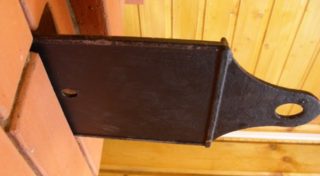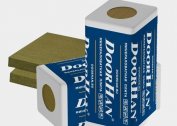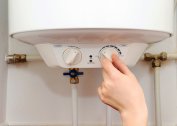The draft in the chimney is a key point in the functioning of heating structures and the fire safety of residents of houses with stoves. Elimination of possible problems will improve the quality of the stove, which will allow you to feel confident and comfortable in your home. For this, it is important to know why there is no draft in the stove, ways to determine its level, as well as modern methods of regulating the yield of combustion products.
Traction Measurement Methods
The main apparatus for conducting measurements in chimneys is an anemometer. It has been used until recently due to the possibility of obtaining accurate results with an average smoke flow rate above 1 meter per second.
Now for measurements using more accurate devices. They are used by professional chimney sweeps and allow you to determine why there is no draft in the stove at home.
Checking the draft in the chimney without the use of special devices is possible using thin paper. To do this, a piece of paper is placed in a pipe and observe its vibrations. Movements in different directions indicate the absence of violations during the removal of combustion products.
You can also apply a lit match. In addition to the direction of the flame, you need to evaluate its color:
- A yellowish golden hue is a normal level of traction.
- Dark red glimmers indicate impaired smoke.
- Flames with a pure white hue along with noise in the chimney indicate strong draft.
When the furnace is kindled, the smoke stream can be directed to the bathhouse or home. This indicates the presence of reverse thrust. The heating system must not be started until the problem is solved, since it will smoke inside the room.
Causes of Bad Traction
The thrust of the furnace depends on many factors. The main reasons for the violation of the output of combustion products through the chimney are:
- soot;
- violation of ventilation;
- environmental factors.
After the combustion of coal or firewood, soot is formed. This is the final combustion product that settles inside the heating system, which narrows its diameter and causes backward draft.
To solve this problem, you need to regularly clean the pipe. To prevent severe pollution, use solid fuel briquettes made of wood. They have lower moisture and harmful substances.
Deficiency of air in the building leads to the development of reverse thrust. On the other hand, strong drafts are unfavorable for the normal functioning of the heating system.
Before the first kindling, check the air movement in the building. This eliminates the possibility of poisoning by combustion products.
The main environmental factors in which smoke is not emitted are high humidity and strong winds. High rates of air humidity are formed at a reduced level of atmospheric pressure. This discharges smoke and disrupts gas flows.
Strong winds interfere with normal smoke removal. During a change in gas flow, back draft may develop. This applies to chimneys that are connected to the furnace and do not have heating wells.
Wind protection is provided by pipe caps. They also prevent the pipes from getting wet in rains and snow.
Regulation methods
Setting a normal level of traction ensures high efficiency of the heating structure of the house or in the bath.It also increases fire safety and prevents the possibility of poisoning by combustion products. For this, several techniques are used:
- stabilizer installation;
- increase in pipe length;
- installation of rotational turbines.
Stabilizer installation
The device is installed on a chimney. At the bottom of the fixture is a special hole that provides unimpeded circulation of gases to control the air level in the chimney.
Together with the stabilizer, a sensor is installed to monitor the temperature of the exhaust products of combustion. The alarm system is triggered when the pipe is heated by gases while reducing draft.
Chimney length increases
When using the method, a number of rules must be observed for the normal operation of the heating system.
- The height of the chimney is at least 5 meters. Optimal - more than 6 meters in a two-story building and an extension of 4 meters per floor.
- The chimney is located above the ventilation duct. This will prevent carbon monoxide from entering the room.
- The height of the chimney part above the roof of the building is at least 50 centimeters.
- It is recommended to entrust the cross section of the pipe to the master, who will do everything according to the established standards. Otherwise, the draft may disappear, after which the furnace will cease to fulfill its function.
When installing a chimney, it should be borne in mind that inclined and horizontal sections adversely affect gas flows. To solve the problem, you need to extend the chimney pipe.
Use of rotary pipe
Turbines above the ends of the chimneys enhance the processes of removing combustion products by discharge of smoke. In addition, the device protects the chimney from all kinds of debris and meteorological precipitation.
The role of the damper in the operation of the heating system
The gate, or damper, eliminates the possibility of developing reverse thrust and increases the fire safety of the room. It is installed by 2 methods:
- into the chimney pipe;
- on the oven door.
The damper serves as a kind of regulator. When the gate is closed, the cross-sectional area of the pipe decreases along with the thrust and vice versa.
Using traction stabilizer
In order to maintain an optimum draft level, a secondary air supply device, called a chopper or stabilizer, is used. Safety valves prevent pressure build-up in the chimney and furnace.
This device is installed on the chimney. It has an iron plate with a load on one side. With weak or reverse thrust, it serves as a kind of stupor and does not allow combustion products to get inside the room.
Standard pressure settings are 10-35 Pa. The range of boundaries is set by the user. The device is completely autonomous and does not require power supply, which is very convenient in everyday use.
If there is no draft in the heating boiler, call a professional chimney sweep. He will evaluate the state of the structure, tell you why to install the devices, and give tips on the operation of the device.
Ensuring normal traction is one of the main tasks when working with heating structures in homes and saunas. It is not recommended to fully rely on appliances. It is necessary to independently control the operation of the furnace and clean it in a timely manner. This will ensure comfortable conditions during the use of the premises, as well as the stable functioning of the heating system and increase the fire safety of the building.








